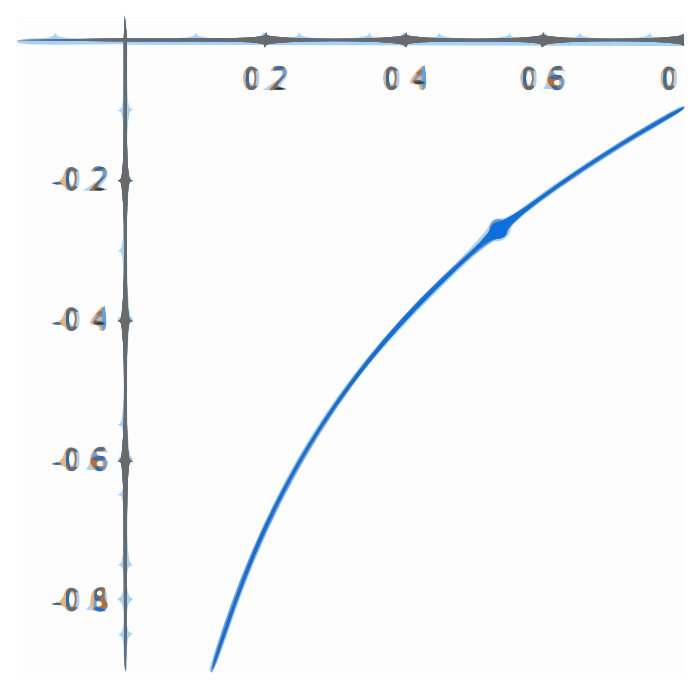If a number is part of a nonlinear operation, the only way to extract that number is through a nonlinear operation.
Please Remember:
The opinions expressed are mine only. These opinions do not necessarily reflect anybody else’s opinions. I do not own, operate, manage, or represent any band, venue, or company that I talk about, unless explicitly noted.

 Want to use this image for something else? Great! (No high-res on this one. Sorry – I forgot.)
Want to use this image for something else? Great! (No high-res on this one. Sorry – I forgot.)Quite often, when trying to work with audio issues involving math, you end up with an unknown in an “inconvenient” place. Finding the unknown means some algebraic acrobatics – which wouldn’t be a big deal if not for the mathematics of sound being funky.
Audio math isn’t just bog-simple linear operations. It’s also nonlinear in nature, and the nonlinear bits (that is, logarithms) can make the algebra confusing. It’s confusing to the point that folks like me, who’ve been involved with audio for a good long while, can still go about something in entirely the wrong way.
But there’s one thing I finally realized. It’s one of those things that was probably explained to me ages ago, but didn’t “take” for some reason. It’s a realization that makes things much easier:
For the purposes of algebra, a logarithm encapsulates the connected number or expression that REPRESENTS a number. You can NOT extract the connected number or expression through linear means.
If you just said, “What?” then don’t worry. I can give you an example.
Let’s say that you’ve got an amplifier that can output a momentary, undistorted peak of 500 watts into a loudspeaker connected to one of the channels. What you’re curious about is a ballpark figure regarding the continuous power involved when you reach that peak. You figure that the crest factor of the signals sent to the amp (the ratio of peak to RMS voltage) is about 12 dB. Remembering your basic audio math, you work this up:
10 log10 x/500 = -12 dB
In other words, an unknown number of watts compared to the known peak power of 500 watts is -12 dB. (The decibel in this case is being referenced to 500 watts.)
Dividing both sides of the equation by 10 is appropriate, because that “10” on the left is engaged in the linear operation of multiplication. As such, the linear operation of division is the inverse. You end up with:
log10 x/500 = -1.2 dB
Now – it’s very tempting to try a linear operation to “move x” to a convenient spot. You might think that dividing by x gets you this (which becomes easy to work out on a calculator):
log10 1/500 = -1.2 dB/x
-2.6989 = -1.2 dB/x
-2.6989x = -1.2 dB
x = -0.444 watts
Nope. That can’t be right. For a start, there’s no such thing as negative power. For another, 10 dB down from 500 watts is 50 watts, and 3 dB down from that is 25 watts, so the number -0.444 isn’t even close. Even if you didn’t know that, plugging -0.444 into the original equation yields an answer that doesn’t agree with the original conditions:
10 log10 -0.444/500 = -12 dB
log10 -0.444/500 = -1.2 dB
[Calculator Returns: Invalid Input] ≠ -1.2 dB
Remember what I said: The logarithm is encapsulating the “x/500.” That is to say, x/500 is NOT two numbers in this case. It’s one number, represented by an expression, and we’re trying to take the logarithm of it. The only way to get the number “x/500” out into a place where you can use linear math is to reverse the logarithm. Here’s where we were before things went wrong:
log10 x/500 = -1.2 dB
The inverse of a logarithm is an exponent. The logarithm’s base is nothing more exotic than the base number that the exponent raises, and the exponent itself is whatever is on the other side of the equation.
10^-1.2 = x/500
NOW you can use linear math.
0.0630 = x/500
31.548 = x
Put that back into the original equation, and things work out perfectly.
10 log10 31.548/500 = -12 dB
log10 31.548/500 = -1.2 dB
log10 0.0630 = -1.2 dB
-1.2 dB = -1.2 dB
So, if you remember that extracting numbers from nonlinear operations requires an inverse nonlinear operation, you’ll figure out that the continuous power across your speakers is about 31 watts.
(Incidentally, this is one of the reasons why big PA systems are so big, but that’s a discussion for another day…)